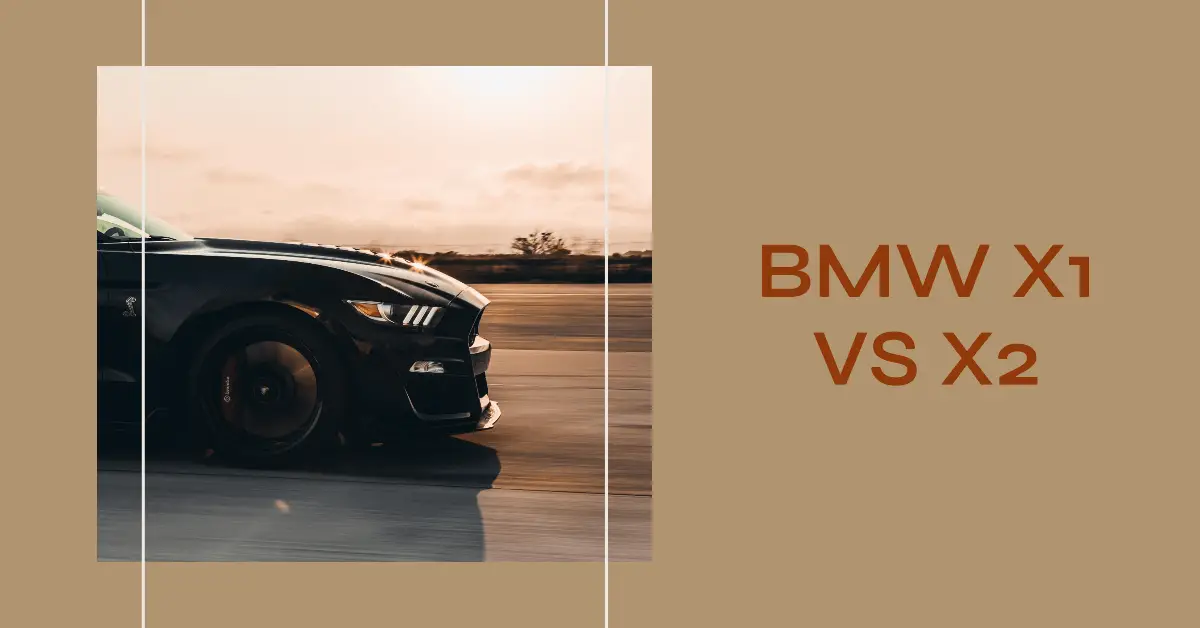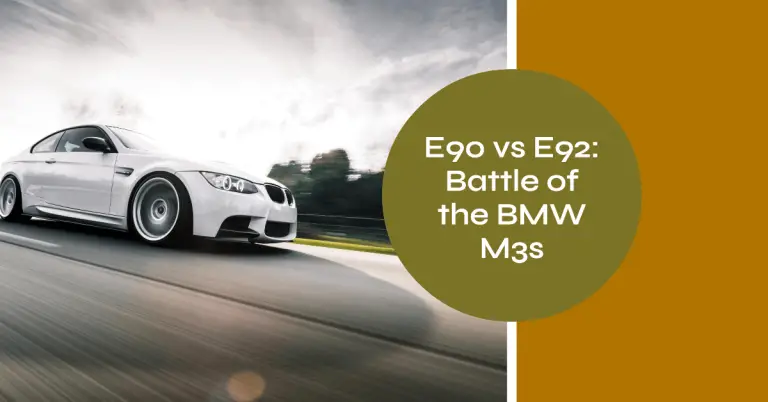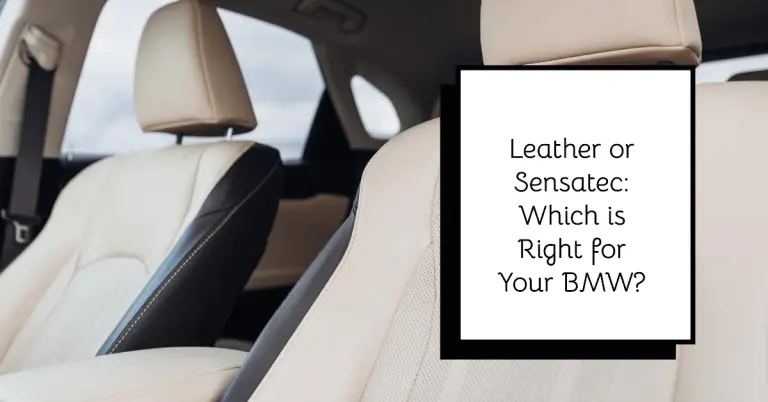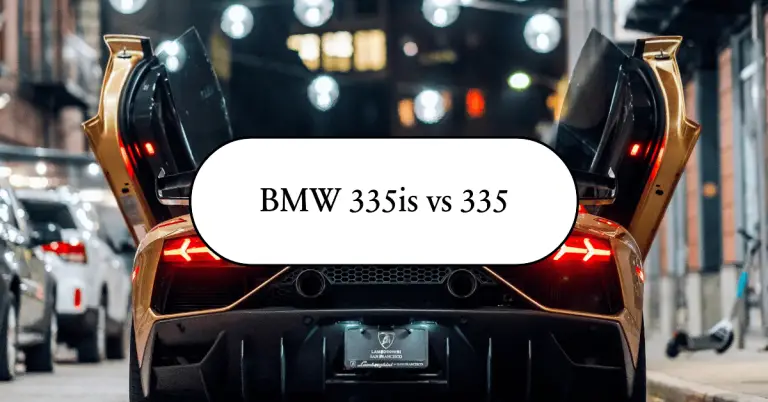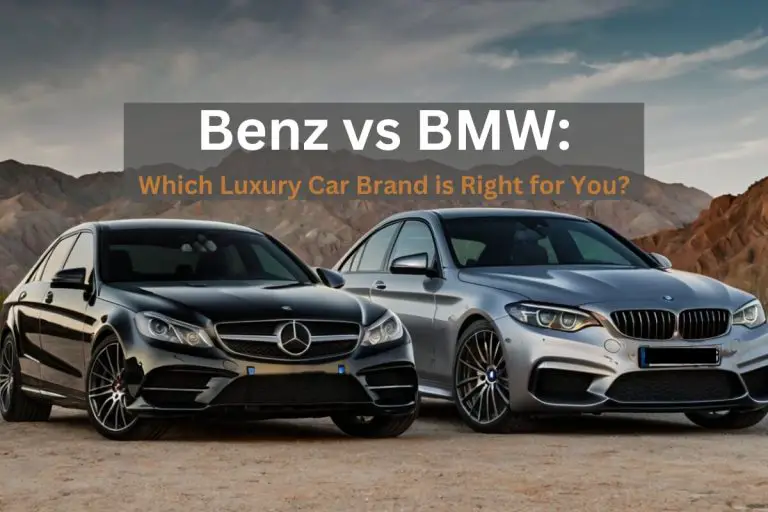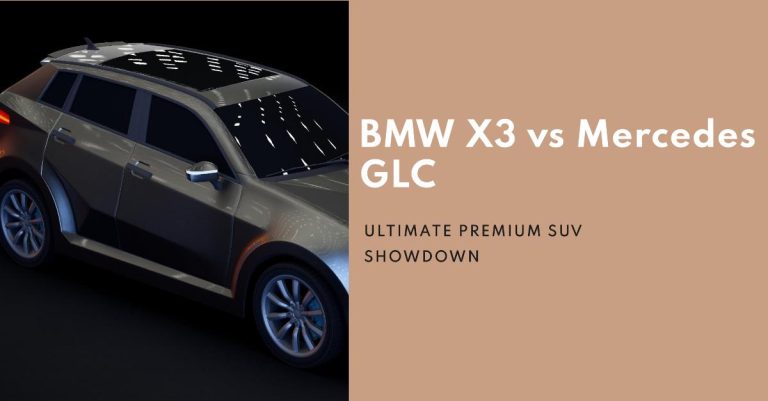BMW X1 vs X2: How Do They Compare?
If you’re looking for a compact luxury SUV, two of the top options from BMW are the X1 and X2. As more car buyers downsize to smaller crossovers, these BMW SUVs have become two of the brand’s most popular models.
The X1 and X2 share a lot in common – they’re both built on the same front-wheel drive UKL platform and offer similar engine choices. However, there are some key differences between these BMW SUVs when it comes to styling, interior space, driving dynamics, and pricing.
So if you’re trying to decide between a BMW X1 or X2, how do you choose? This in-depth comparison will go over the exterior design, interior cabins, performance specs, cargo capacities, and MSRP pricing to help you decide which 2023 BMW compact SUV is the better fit for your needs and preferences.
Styling – X1 Traditional SUV vs X2 Sporty Coupe
The most obvious difference between the BMW X1 and X2 is in their exterior styling. The X1 has a more traditional boxy SUV shape with an upright front end and roofline. This allows for maximum interior space and gives the X1 a rugged, family-focused look.
In contrast, the BMW X2 has a much sleeker and sportier coupe-like profile. The X2’s roofline slopes down dramatically toward the rear hatch, giving it a fastback silhouette reminiscent of BMW’s X4 and X6 crossover coupes. This aggressive, sweeping roofline helps the X2 stand out from the more conservative X1 but does sacrifice some rear headroom and cargo space.
Up front, both models get BMW’s signature kidney grille and twin circular LED headlights. However, the X2’s grille is larger and more vertical compared to the wider, squatter grille on the X1. Out back, the X1 again looks more upright and practical while the X2 has slimmer LED taillights tucked under its sloping rear glass hatch.
Overall, the X1 represents a traditional entry-level luxury SUV optimized for utility while the X2 trades some practicality for a much more distinct, youthful, and performance-oriented look. The coupe-like X2 is meant to be the sportier, more stylish option in BMW’s compact crossover lineup.
Seating and Cabins – Versatile X1 vs Stylish X2
Inside, the cabins of the X1 and X2 also differ quite a bit when it comes to seating configurations and overall interior design.
The X1 can fit up to 5 passengers with its standard two rows of seating. The rear bench seat is upright for optimal headroom and legroom. Front seats are also mounted a little higher for better outward visibility and an ease of entry and exit. This all contributes to a more practical, family-focused interior environment.
The X2 however only seats 4 passengers due to its coupe-like sloping roof. The rear bench is mounted lower and has less headroom. The X2’s interior also feels more cockpit-like with a driver-focused center console oriented slightly toward the front seats.
While the X1 prioritizes functionality and versatility, the X2’s interior is made to feel more stylish and upscale. The X2 comes standard with a Sensatec synthetic leather dashboard, leatherette upholstery, and ambient cabin lighting. The cockpit features BMW’s Live Cockpit Professional system with a digital instrument cluster and a large 10.25″ central touchscreen display.
In contrast, the X1 has hard plastic surfaces and less standard equipment. Leatherette seats are optional upgrades and the digital cockpit system costs extra. However, the X1 does offer optional panoramic moonroofs to enhance the open, airy feel.
Overall, the X1 can fit an extra passenger and gear more comfortably thanks to its practical layout and upright seating. The X2 sacrifices some utility for a more stylish, luxurious coupe-like cabin geared toward the driver.
Performance – Similar Speed and Handling
Despite their different designs and styling, the BMW X1 and X2 share many performance components under the skin.
In the US market for the 2023 model year, both SUVs use BMW’s 2.0L TwinPower turbocharged 4-cylinder engine. The base sDrive28i units generate 228 horsepower and 258 lb-ft torque, enabling 0-60 mph acceleration in 6.3 seconds for either model.
Stepping up to the xDrive30i adds BMW’s intelligent AWD system for enhanced grip and control in all weather conditions. These versions produce a quicker 0-60 mph time of 6.0 seconds flat. Fuel economy for both the X1 and X2 is a respectable 24 mpg city/32 mpg highway.
The X1 has a slightly higher tow rating at 2,000 lbs max capacity versus just 1,500 lbs for the X2.
Being front-wheel drive based, some reviewers note that both models lack the perfectly balanced rear-wheel drive handling dynamics of BMW’s traditional sedans and coupes. However, the X2’s stiffer suspension tuning and available adaptive dampers help it feel sportier and more planted through corners compared to early X1 models.
The X1’s taller, boxier shape does give it better overall outward visibility and a more commanding view from the driver’s seat. The X2’s lower, sloping roof and small rear windshield reduce rearward visibility for parking and changing lanes.
Overall for straight line speed and acceleration, there’s not much difference in performance between the compact X1 and X2 crossovers. But the X2 aims to be the sportier option while the X1 leans more into ride comfort and passenger space.
Cargo Capacity – X1 More Practical
One area where the X1 clearly beats out the X2 is with cargo space. The boxier X1 offers significantly more cargo room behind the rear seats.
With the rear seats up, the X1 provides 21.1 cu ft of cargo volume. Fold the 40/20/40 split folding seats down, and you get a cavernous 58.7 cu ft of total cargo space in the X1. You can fit large boxes, furniture, and other bulky items inside with the seats folded.
Due to its tapering roofline, the X2 only offers 15.7 cu ft behind the rear seats. With the rear seats folded down, total cargo volume only measures in at 47.7 cu ft.
So the X1 offers over 10 cu ft more cargo room than the X2 with the rear seats up. And when you fold the seats down, the cargo hold difference grows to nearly 11 cu ft.
The X1 also has a flat load floor when the rear seats are stowed to better fit larger objects. And you can fold down just a portion of the X1’s 40/20/40 rear seats if you need cargo space while still carrying passengers. The X2’s rear seat folds as one solid bench.
For gear hauling utility, the X1 is clearly the winner. The X2 does have expandable underfloor cargo storage but still can’t match the X1’s overall practicality.
Pricing – X1 Lower Starting Price
When it comes to pricing, the 2023 BMW X1 again beats the X2 if you’re looking for value and affordability.
The base 2023 X1 sDrive28i starts at an MSRP of $39,600 including destination fees. Opting for the X1 xDrive30i AWD model brings the starting price to $41,600.
For the sportier X2, you’ll pay more for less practicality. The 2023 X2 sDrive28i starts at $43,000 and upgrading to the xDrive30i AWD version costs $45,000.
So the X1 gives you more interior room, cargo space, and standard equipment for around $4,000 less to start than the X2. You can save even more by looking at lightly used X1 models just a few years old.
Fully loaded, prices for both SUVs can approach $50,000 and beyond with options like adaptive suspension, Harman Kardon premium audio, head-up display, parking assist, and wireless charging. But overall, the X1 delivers excellent value at its lower price while the X2 commands more money for its unique coupe-crossover aesthetic and more upscale interior details.
Conclusion
To summarize the key differences – the BMW X1 is the more practical choice for buyers focused on interior room, cargo utility, and value. The X1’s boxy upright shape provides more rear seat headroom, over 10 cu ft of extra cargo space, and costs around $4,000 less than the X2 to start.
Meanwhile, the BMW X2 sacrifices some practicality for its unique coupe-like exterior styling and a more luxurious, driver-focused interior. The X2 is meant to be the sportier, more stylish option for buyers willing to pay extra for the aggressive roofline, cockpit-like cabin, and premium details.
So if hauling families or gear is a top priority, the X1 is likely the best option between these two BMW crossovers. But younger professionals and couples looking for a more eye-catching, fun-to-drive compact luxury SUV should go for the X2.
Both models offer the excellent driving dynamics and premium quality expected from the BMW brand. There’s really no unambiguous winner between the X1 and X2 overall. Focus on whether the extra utility of the X1 or the flashy style of the X2 aligns more closely with your priorities to decide which of these BMW compact SUVs is the right fit for your needs.

